As most political parties from the BJP to the Congress promise farmers freebies and loan waivers, no one seems to care whether there will be enough monsoon rains in 2019. Our economy rests on it. This is the first time in the last 100 years that India has had a fifth consecutive year of insufficient monsoon rains. Now, private and state bodies have predicted a below normal monsoon in 2019 as well – making it the sixth consecutive year.
Once the new government takes charge in a few weeks inadequate monsoon rains are likely to be the central most critical issue to be resolved and starting then to resolve it might be too late.
Normal monsoon rains
Performance of rains in a year is measured against a normal level of rains called the long period average (LPA). It is estimated based on average of the actual rainfall received between 1951 and 2000. All-India LPA for a year is about 119 cm of rain of which about 89 cm i.e. about 75 per cent normally comes in the four-monsoon months: June, July, August and September. Within these four months, July and August are the most important months.
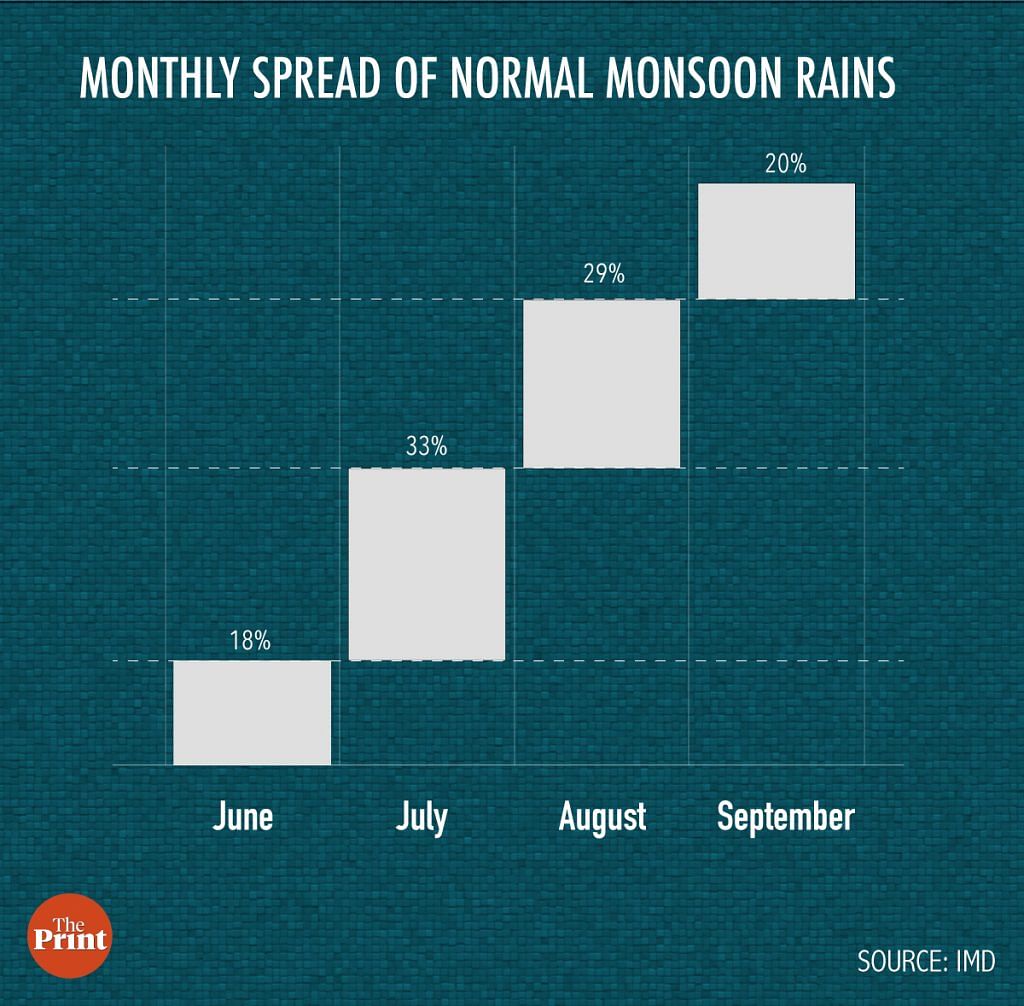
Technically, drought is declared when total monsoon rains fall below its LPA by more than 10 per cent and affects more than 20 per cent of the country’s area. If the rainfall deficiency is less than 10 per cent but above 4 per cent, then the situation is that of “below-normal” rains. Rains are called normal if they are +/-4 per cent of LPA.
In the last 23 years, India faced drought in five years (2002, 2004, 2009, 2014 and 2015)
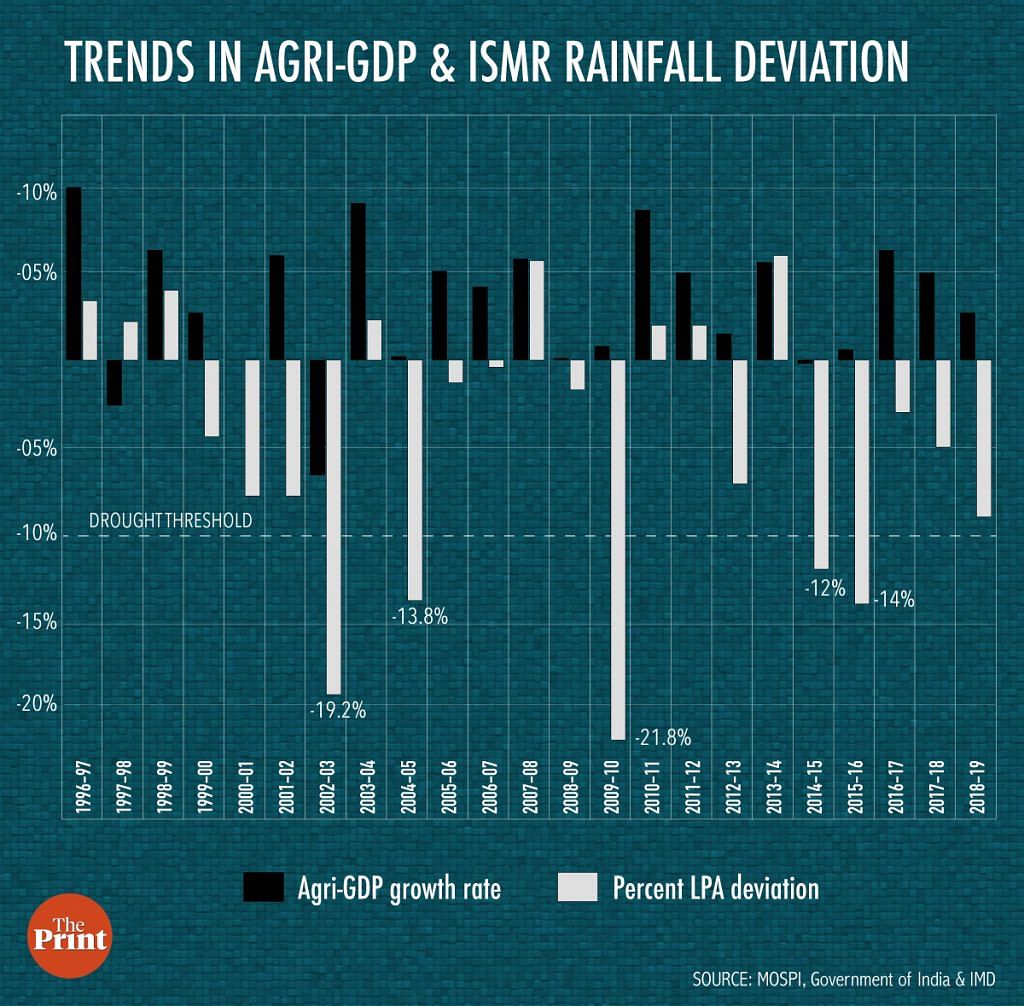
With 49 per cent of the 198 million hectares of country’s gross cropped area (2014-15) under assured irrigation and the remainder i.e. more than half, depending on rains for meeting its irrigation needs, monsoon rains become important for a country that is still agrarian, poor, and highly food insecure at the micro-level.
Research shows that low monsoon rains bring down the agricultural GDP of the country (Figure above). Of course, monsoons are not the only factor, but statistical exercise reveals that it is one of the most important factors. In all the recent five drought years, India’s agri-GDP growth rate and food grain production fell. Sharpest fall in food grain production happened in the year 2002-03 when the rainfall inadequacy was 19.2 per cent and the annual food grain production fell by more than 38 MMTs. In the worst drought year in recent years, 2009-10, even though the rain inadequacy of 21.8 per cent was higher than that in 2002-03, the food grain production fall was smaller at 16.4 MMTs. Is the system’s growing resilience to weather vagaries? However, an import of about 5.75 MMTs of wheat (highest ever after the 2006 wheat import of 5.98 MMTs) in 2016 raises questions about this resilience.
Nevertheless, historical data shows that there is a strong correlation of about 0.81 between rainfall deviation and year-on-year changes in the country’s food grain production, thus highlighting the importance and centrality of monsoon rains.
Also read: Indian summer monsoon amplified global warming 130,000 years ago
Forecast 2019
The 2019 monsoon forecasts from IMD and Skymet both predict inadequate monsoon rains, not drought but lower than LPA. Skymet predicts them to be 7 per cent lower than LPA with the highest shortfall in the first two months of June and July. IMD is yet to release its monthly rain predictions.
Deficient rains this year are largely attributed to developing conditions of El Nino in the Pacific Ocean. El Nino refers to abnormal heating of waters in central and eastern equatorial the Pacific Ocean. This impacts wind currents, heat and moisture levels above the Pacific Ocean affecting weather around the world. It is in particular associated with lower monsoon rains in India.
Since 1980s, barring year 2014, all Indian droughts have happened in El Nino years but not all El Nino years have resulted in Indian droughts. In 2014, even though there was only a weak El Nino developing, Indian monsoons were about 12 per cent below the LPA. The year 2015 was a full El Nino year and Indian monsoons fell short of its LPA by 14 per cent.
As per US’ National Oceanic and Atmospheric Administration, conditions of El Nino exist currently but are likely to weaken in the coming months, perceptibly causing IMD and Skymet to not forecast a drought in 2019.
Also read: Indian summer monsoon amplified global warming 130,000 years ago
What a negative 2019 monsoon forecast means
Since 2014-15, Indian monsoons have been below its LPA.
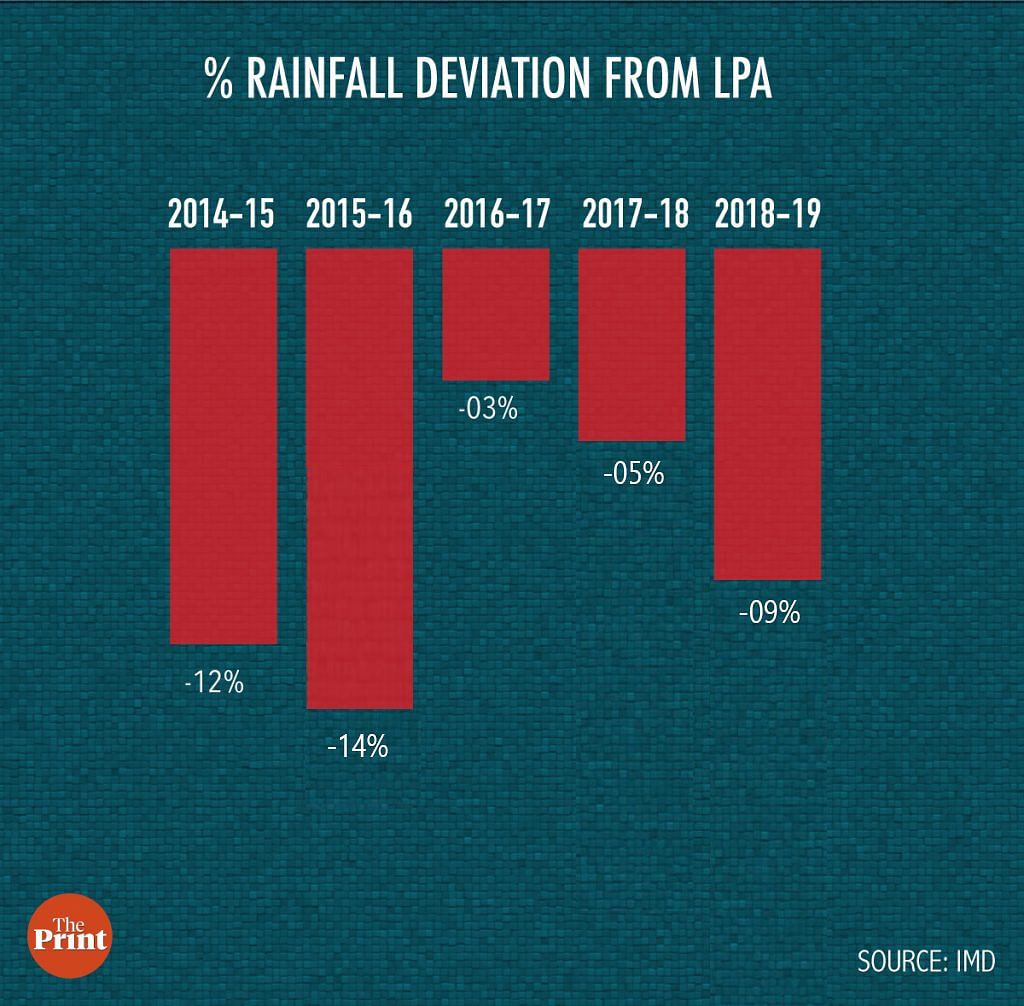
In the last 100 years, there have been only two episodes of consecutive four years (between 1984-1987 and 1999-2002) registering lower than normal rains, but five consecutive years of rains below LPA (2014 to 2018) has never happened in India since 1901.
That is unprecedented and unknown in Indian monsoon history.
A look at monsoon performance in different Indian states in the last five years, helps us in identifying regions with greater rainfall deficiency (Figure). Regions like eastern and western UP, Gujarat region, Maharashtra’s Marathawada and Haryana are clearly reeling under a water crisis. Here, the monsoons fared much worse than national averages and the extent of deficiency is much graver than that represented by the average all-India numbers.
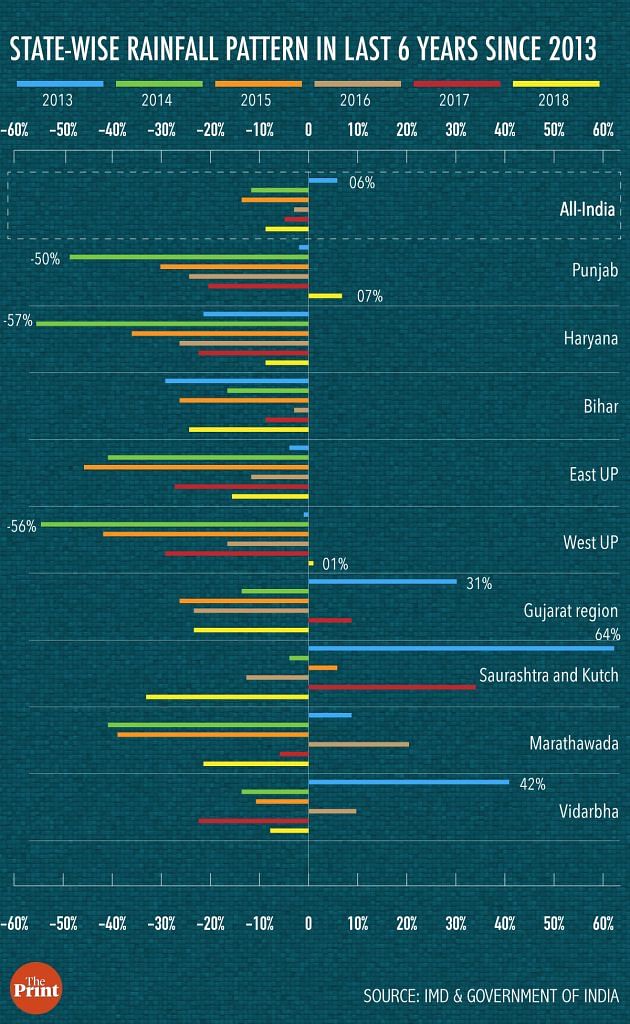
Even water in their major reservoirs is drying up. As per the CWC’s Reservoir Storage Bulletin released on 25 April, actual water levels in major reservoirs in Gujarat, Maharashtra, UP and Andhra Pradesh, for example, are about (-)29 per cent, (-)40 per cent, (-)37 per cent and (-)84 per cent respectively below their normal levels at this time of the year. In fact, in Maharashtra reservoirs like Jayakwadi, Bhima and Yeldari that provide irrigation to large agri-lands in the state are completely dry and other such reservoirs like Mula, Isapur, Pench have lower than 10-year average levels of water in them. Similar situations exist in other states.
With low water in reservoirs and limited monsoon rains to replenish them in the coming months, not just agriculture but regular human needs of water will be disrupted in these states.
Also read: This Maharashtra village has found the answer to farm distress. It’s not a loan waiver
What now
The government’s machinery needs to be ready to face the upcoming challenge of deficient monsoons and its monthly variability. On priority, water-stressed districts should be identified and an updated disaster management plan should be put in place. Timely advisories about choosing the right crop and the right sowing timing should be released. If June and July rains are low and delayed, then the government might need to supply fresh round of subsidised seeds, possibly shorter duration ones to farmers. In case the delay is beyond a threshold date, timely advisories to shift to non-paddy crops like pulses need to be triggered.
The convergence of investments in irrigation at the field level is needed, and farm-water-use efficiency should be improved by encouraging reduced water wastage and by adopting precision-irrigation techniques like drip and sprinkler wherever possible. Underground water condition needs to improve and so does the soil moisture. Creating micro-water storages, possibly using MGNREGA assignments, can support irrigation during long dry spells. The government might also want to consider providing a diesel subsidy in drought and deficient rainfall affected areas. The role of science and the extension system in identifying and spreading relevant high-yielding, drought-tolerant seed varieties cannot be over-emphasised.
In drought years, with falling economic activities on the farm, marginal farmers and landless labourers resort to work under the employment guarantee scheme, MGNREGA, which should gear-up to absorb increased work demand in the upcoming months.
There is an alarming need to acknowledge and prepare for the upcoming monsoons. We hope that amidst the election rush, Indian bureaucracy undertakes to prepare the relevant departments and machinery for the coming months as there appears a high chance that by the time the new government takes office it will be facing deficient monsoons.
The author is a Senior Consultant at ICRIER, New Delhi. Views are personal.


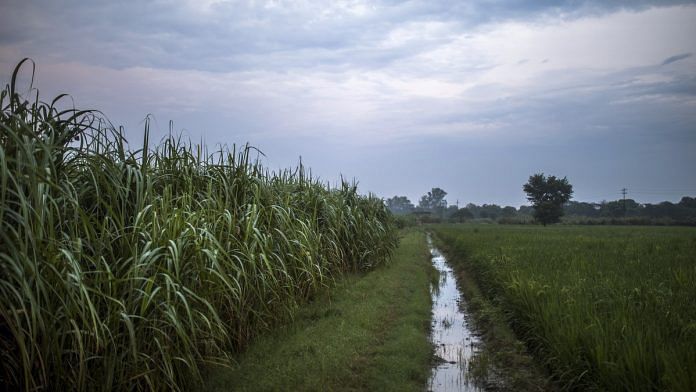

Indeed, it’s high time the Indian election and public policy debate occurred on the issue of water and the larger question of impact of climate change on India. Tragically instead, the whole country is being made to discuss chowkidari and vande matram.
Climate change is already having a serious impact on both agriculture and drinking water availability in both rural and urban areas alike. This is massively compounded by our lack of water table management. We are running out of water but instead of doing something about it, are busy in the tamasha. In this gloom, the world only silver lining is Congress manifesto which at least talks about an effort to rejuvenate water bodies and aquafiers.